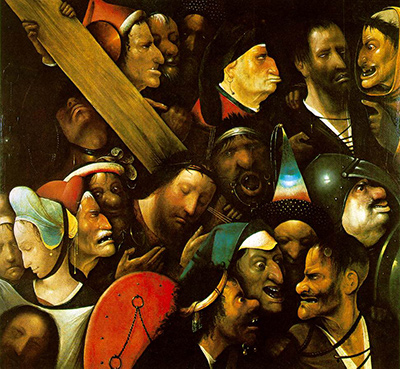Christ carrying the Cross is one of the most celebrated paintings in the world. It is believed to have been painted by a follower of Hieronymus Bosch in the short period after 1500 and can be found in Belgium at the Museum of Fine Arts in Ghent.
Over the course of History many individuals in the Art fraternity have had a rather difficult time believing that this painting was a work of Hieronymus Bosch as the style employed to make it is not consistent with his other works.
Hieronymus Bosch was a prolific Dutch Artist whose works were notable for their lush imagery and very detailed landscapes.
Historians found a certain degree of consistency between this painting and other works such as the "Tritych of the Passion" that were released to the public many years later which indicates a lack of relationship between the two. History points to a particular follower of Hieronymus who is believed to have painted it.
The painting consists of a portrait of Jesus Christ carrying a cross while surrounded by a huddle of caricatured heads that all have different bizarre expressions that total to a cumulative number of eighteen.
These caricatured heads represent our humanity surrounding a woeful Christ. At the top left end you'll find Simon of Cyrene. At the bottom left there's Veronica with the holy shroud.
At the bottom right end there's the impenitent thief while the penitent thief is on the top right end, represented by a monk. There's sophistication in the manner in which these portraits were painted that makes it very unique for its time and a one of a kind painting by its own right.
The director of the museum in which it his housed stated that if it wasn't Hieronymus Bosch that painted it, then it was definitely a genius even greater than Bosch.
While historians differ on a number of aspects in as far as the meanings of the paintings are concerned, many can easily point out the Hallucinatory style that was associated with Bosch which goes on to support the notion of the painter being a follower of his.
The various grotesque heads all indicate how human beings are on the inside. They are meant to expose their ugliness, their shame, their sins and all their hidden vices which you'd otherwise never see with the naked eye.




